The Frame

Founded in 2004, Niner is the longest-running bike company dealing exclusively in big wheels. That might sound like a liability in today’s 27.5-crazed market, but the decade-plus of experience means the company has one of the most refined 29er suspensions, and every iteration of its bikes brings further honing and polishing.
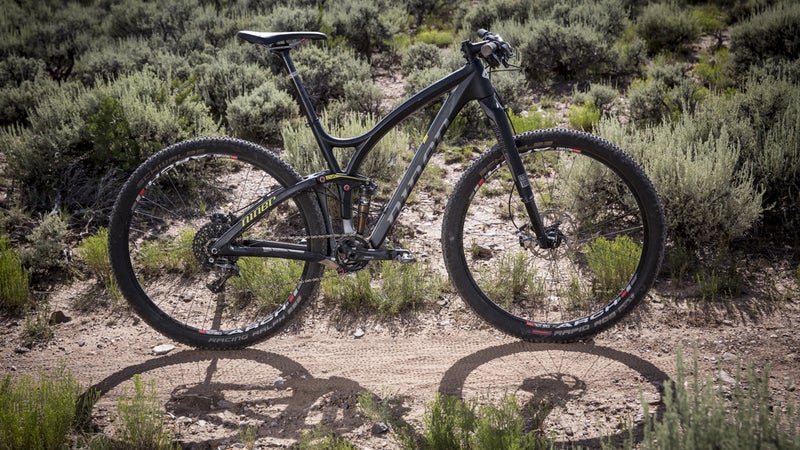
That’s definitely true of this Jet 9, which gets Niner’s RDO seal, the “Race Day Optimization” designation for all of the company’s top-spec bikes that include the highest-quality carbon fiber. The new layup technique uses rigid internal molds in the build process—the company won’t give up the exact proprietary details—but Niner says it cuts weight by keeping tube wall thicknesses consistent and preventing excess resin buildup. Truth is, 70 grams isn’t all that much, but the more noticeable result is glass-smooth tubing and finishes, inside and out. This bike has one of the most fastidiously clean and aesthetically pleasing frames we’ve come across.
It uses Niner’s patented CVA suspension, a dual-link design that takes advantage of 29er’s higher axle height by putting the lower swing-arm linkage beneath the bottom bracket. Niner says the configuration yields high pedaling efficiency in every gear (unlike other designs), and we agree that this bike is one of the least bobby and most solid pedalers we’ve tried.
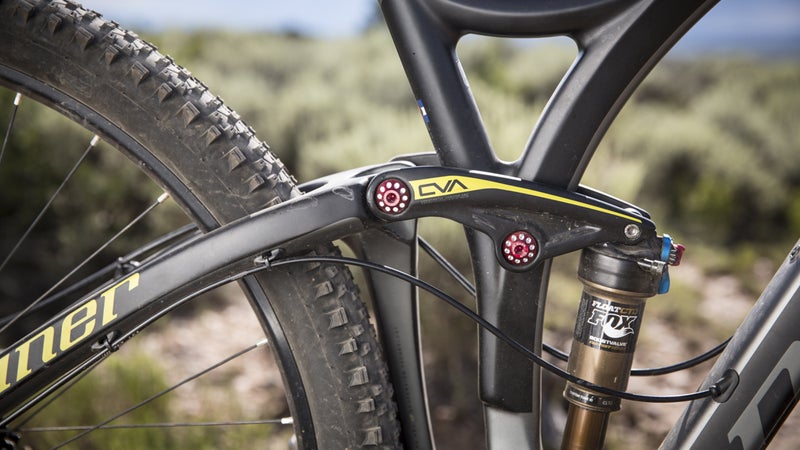
It’s drop-dead gorgeous to look at, too, with those swooping tubes and arcing rear triangle making a nice counterpoint to the same old look of many bikes out there. The aluminum head badge is beautiful, with cable routings passing right through it, and the graphics are both striking and subtle. The only thing we don’t like about the frame are the partial internal routings, which create a bit of a spiderweb of cables around the shock, which doesn’t befit such a pretty bike.
The Build
Niner offers full Jet 9 RDOs from $8,800 down to $4,500; frame and shock go for $2,900. (Niner also sells complete Jet 9 Carbons, with slightly lower-grade composite, for $3,000, and aluminum Jet 9s for just $2,300.) We chose the Four Star RDO build, with a $6,800 price tag, and got a SRAM XO1 1×11 drivetrain and Shimano XT brakes, both of which worked perfectly well. You could spend more for the top-tier upgrades, but honestly these are beyond adequate, and all you give up is a minute bit of weight.
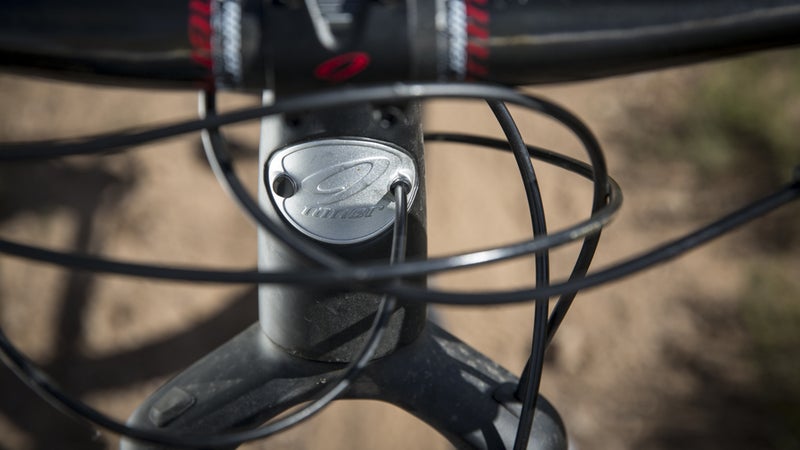
The Stan’s Arch EX wheels are our favorite nonpremium wheels for their exceptional blend of low weight, strength, and affordability ($650 at retail). They aren’t as stiff as carbon hoops, so cornering and handling aren’t quite as direct as they could be. But these wheels are a quarter of the price of composites, and the aluminum deforms rather than breaks on impact, meaning these are likely to last a lot longer if you like to push hard.
So if the wheels aren’t expensive, why is the bike so costly? Retailing for almost $2,000 alone, the RockShox RS-1 fork accounts for a big part of that high price. For many riders, the benefit of this fork won’t merit its expense—after all, lots of good forks out there sell for at least 50 percent less. Having said that, the RS-1 is an incredible piece of engineering, and the performance is indeed beyond anything else. That one-piece crown adds incredible stiffness that makes steering and hard cornering totally confident, and those inverted stanchions keep the fork bathed in oil for a silky, buttery feel. Most noticeable, however, is the way the fork buffs out all the small bumps for an almost automotive-smooth ride but still manages to have a completely linear and bottomless feel in full compression. You pay a lot for that immaculate ride feel, but for a short-travel fork, there’s nothing better out there. Also, the frame and fork are so similar looking and well matched that they feel as if they might come from the same molds.
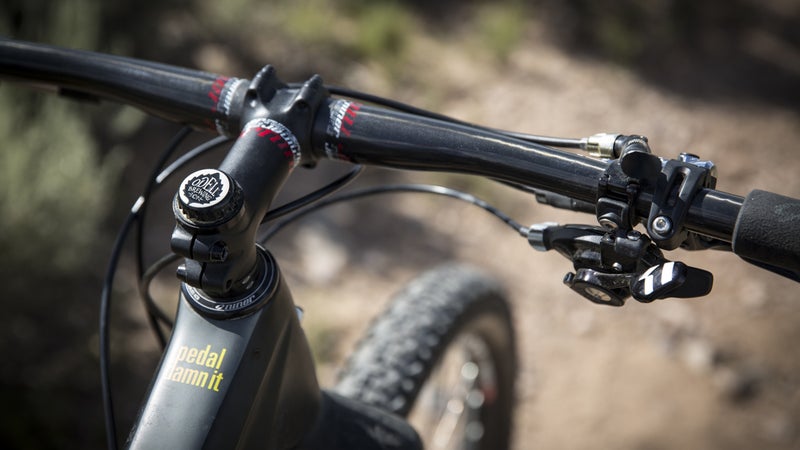
We’re glad that unlike many house-brand accessories, which can feel like cheap knockoffs, Niner’s carbon seatpost and bars look premium, match the bike perfectly, and were carefully designed in-house with sweep and setback optimized. The 780-millimeter bars may be wide for some, but we love them, and we’d rather have them big (with the option to trim) than be stuck with too narrow.
The Ride
The Jet 9 RDO’s overarching sensation is one of confidence, which is not a word we often break out for cross-country bikes. But the combination of a somewhat tall headtube and stack height, a bit longer reach than many XC bikes, and quite long chainstays gave the bike a grounded, totally assured feeling. And while it’s true that the frame is not the lightest on the market in the category, the little extra weight actually contributes to the bike’s poise.
The CVA suspension works as advertised, and we felt no bob or energy loss climbing on everything from in-your-face granny-gear grinders all the way up to big-ring pavement descents in TT mode. We’re still not completely sold on the 1×11 configuration; for long days in the saddle, it never feels like quite enough gears, especially with the 32-tooth front chainring. In our Rocky Mountain locale, a 30-tooth is mandatory for a 29er, and we generally prefer a 28T, though that can leave you undergeared in the big range.
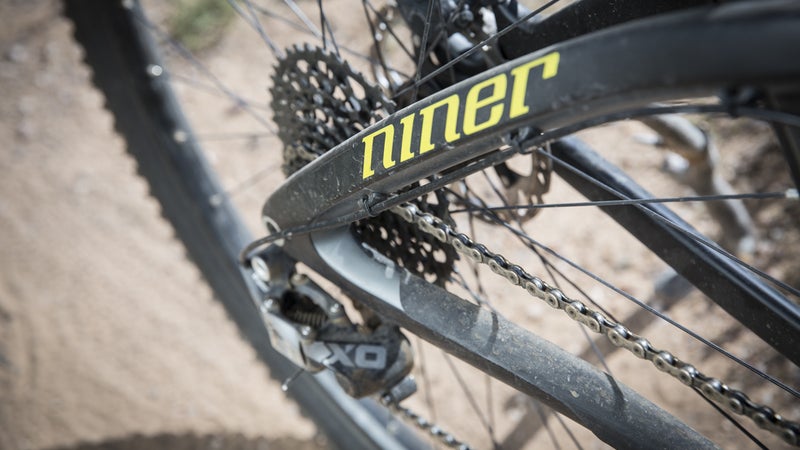
The 120-millimeter fork inspired us to push the bike harder and faster on more rugged terrain than we normally would aboard a cross-country rig. And though the rear end definitely got overwhelmed in chunk and chunder, it kept up about as well as you could expect. With that taller fork, the head angle moves to a steep but not ridiculous 70.5 degrees; we would recommend that setup every time over a 100-millimeter fork, which would make for a much twitchier 71.5-degree head angle.
For the test, we rode the Jet 9 on everything from fast, swoopy desert singletrack to loose, rock-littered jeep roads and steppy, slick rock, and it dealt with everything better than most cross-country rigs. That said, it would have been even better with a dropper seatpost. We understand Niner probably didn’t want to add more weight, given that it’s already started leaning the Jet toward the trail bike category, but it was a definite omission.
Fit and Sizing
The Jet 9 RDO is a bit longer and taller than many race bikes, so it should prove more comfortable for most people and easier on the neck and back. If you tend to be between sizes, we’d definitely recommend going down, not up. And most testers wanted a shorter stem than the 90-millimeter provided, so it’s probably worth checking and asking for a substitute when you purchase.
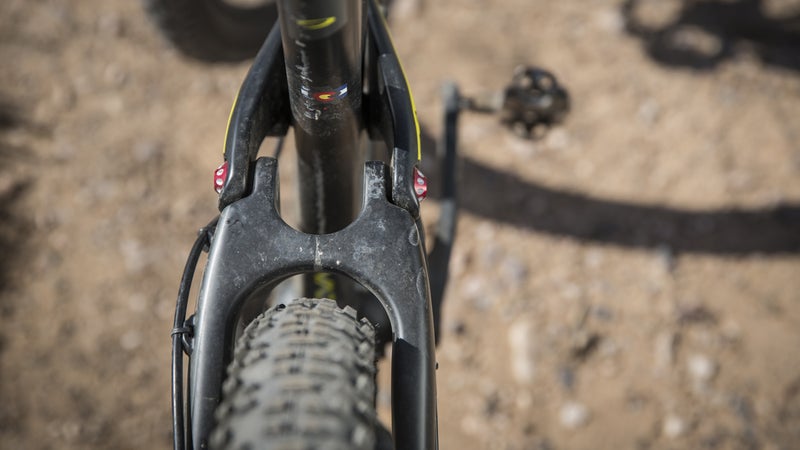
The Competition
Given the bike’s XC race billing, it’s up against the likes of the Specialized Epic and the Trek Superfly. For weight and raciness, the Niner, which tipped our scale at 24.9 pounds, has a tough time keeping pace. With that taller front end and longer fork, it feels really different, too—more Porsche Cayenne than Spyder. As with, say, the Pivot Mach 429 C (which we’ve also been testing with a 120-millimeter fork, incidentally) or even the Yeti SB4.5c, which is slacker and has more rear travel than the Jet but still rides similarly, we like the overall trail feel and manners of the Niner more than the typical XC 29er. Having said that, it’s perhaps not the ideal ride for those obsessed with flat-out speed.
Before You Buy
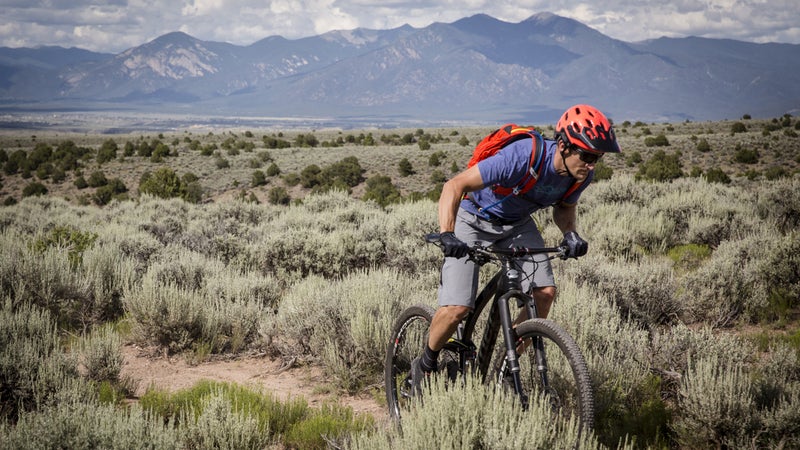
Earlier this fall, Niner announced a new bike, the , with only 90 millimeters of travel in the back, a lighter carbon layup than the Jet 9, and shorter chainstays. It is clearly intended as Niner’s new full-suspension race bike and comes as almost an admission that the Jet was not quite fleet enough for all-out XC. The launch of the RKT 9 underscores our experience and makes us wonder about the long-term future of the Jet 9. Good as it is, this bike occupies a pretty thin slice between the new race model and the full-fledged, trail-oriented RIP 9.
That doesn’t mean that we don’t like the Jet—quite the contrary. This bike highlights a trend in the industry of cross-country bikes getting a bit longer in the suspension, slacker in the angles, and more capable on a wider variety of terrain. Most riders will benefit from these easier-going attributes more than they will the lightest, quickest, snappiest, bike out there. And for anything other than strict XC racing, such as marathons, endurance events, or 24-hour races, the Jet is still an excellent choice. It’s also worth saying that for cross-country racing, we’d take this bike over any short-travel 27.5er on the market—the smaller wheels are best reserved for longer suspensions, in our opinion. Finally, the Jet is a great pick for the rider looking for a good all-around cross-country bike but wanting something different than what all of their friends are riding.


